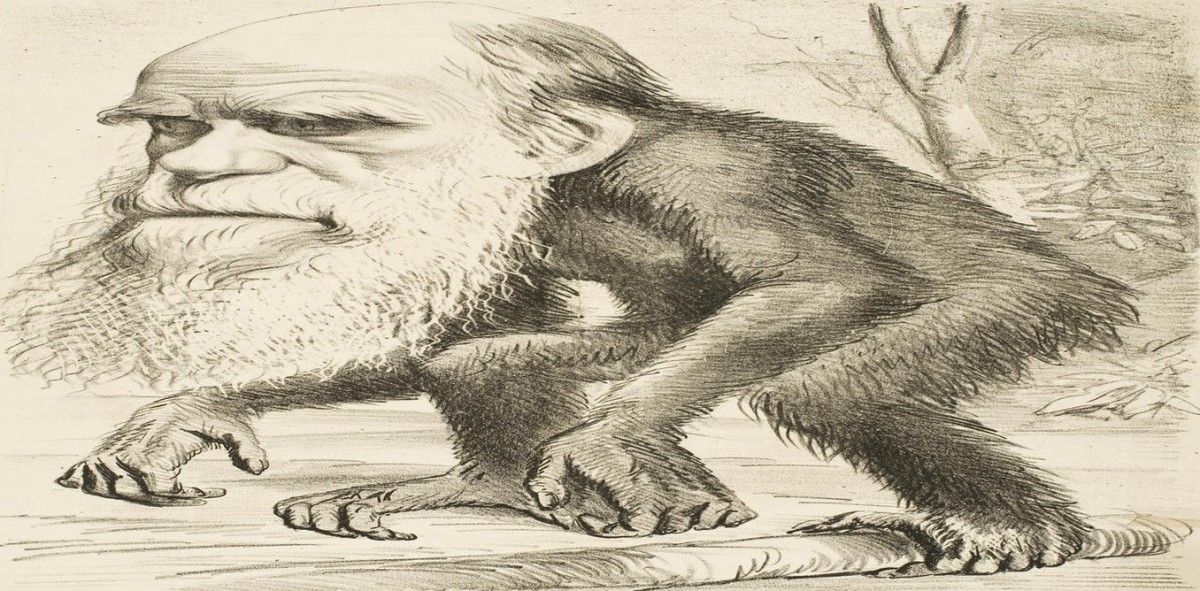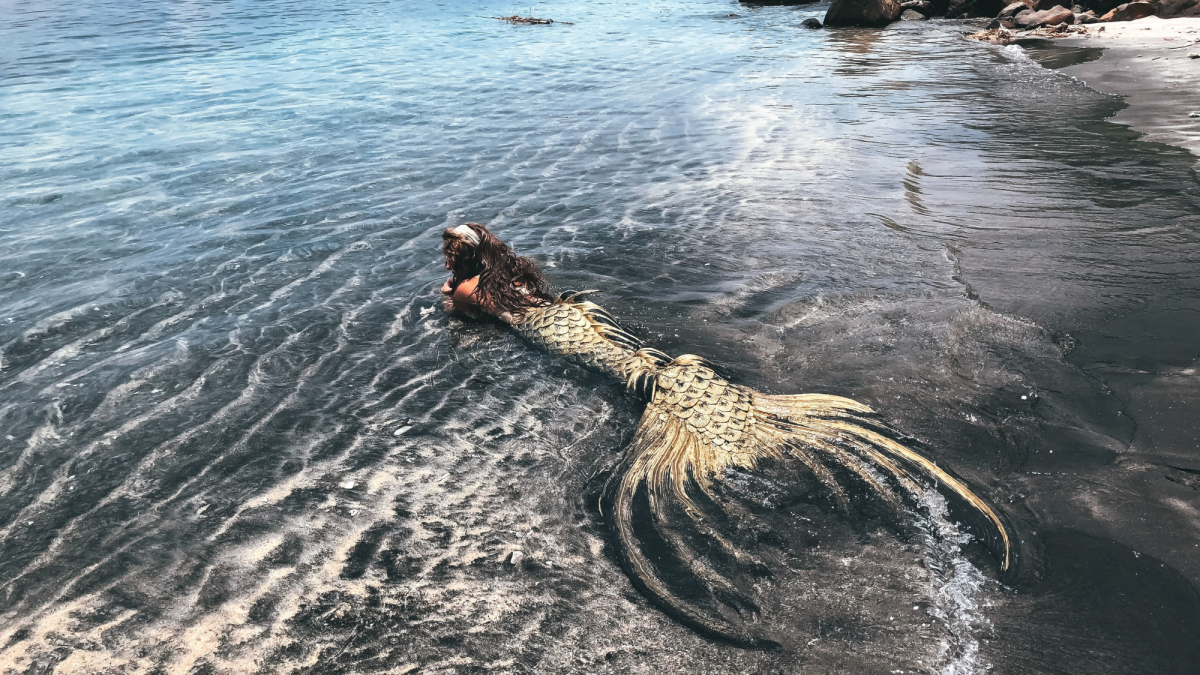The "Stages" of Human Evolution

Hi peter565! How's it going?
Thank you for the question: "If the next stage of human evolution human grow and age at a rate half as today then...?"
I gather that what you are asking is something like: Is a longer life span to be expected as a feature in "the next stage of human evolution"?
Peter565, as part of your question, you also show us a picture. The picture is of the "Amazing: 71 year old Annette Larkins!" I gather that you are presenting her to us as "Exhibit A," as it were.
Yes, it is true that Mrs. Watkins looks rather fit for a seventy-one year old woman. As you know, however, there is a caption beneath her picture, which purports to explain to the world what her "secret" is: "No meat. No dairy. Just raw fruits and vegetables. One gallon of pure distilled water a day with an hour of exercise. Be good to your body. And your body will be good to you."
We have a few things to sort out.
First of all, to speak of "stages of evolution" is to conceptualize human evolution as predetermined, as though future phases of development are visible from our present, necessarily less advanced stage. In other words, its like being at "Stage C" and looking forward to "Stages D, E, and F."
The second thing to say is that we may not rely on that old urban legend that says: "We only use 5 to 10 percent of our brain's 'capacity.'"
That is an urban legend and any neuroscientist will tell us that we human beings use one hundred percent of our brain's and their "capacities," one hundred percent of the time.
Therefore, one can only conclude, first of all, that: We human beings are as "evolved" as we are going to get!
I'll bet I know what you're thinking: How can I say that we human beings are "as evolved as we're going to get," say that we are at the end of our evolutionary journey, and, at the same time, deny the existence of future "stages" of human evolution?
What I would say is that we are at the endpoint of the evolutionary trajectory that made us human beings what we are today.
That is to say, we cannot stand any more upright.
We already have the most helpless and prolonged infancy of all animals on Earth.
Our brains cannot get any "bigger" (assuming "bigger is better") because it is quite hard enough for our big-headed, big-brained selves to be born, thank you very much. To be very, very, very, very crude about the matter: I don't think the female pelvis could take much more, do you?
Virtually all of our brain growth and learning happens outside the womb. It is quite the reverse with other animals: most of their brain growth and learning happens inside the womb; which means they are, pretty much, born knowing what to do, how to function in a relatively fixed environment.
Human beings do not inhabit one, single, fixed environment---indeed, sometimes we even "fix" an "environment" to suit ourselves. Therefore the human organism needed the ultimate flexibility.
And, of course, all of this outer-womb learning, which happens outside of the lines of genetic transmission is facilitated by and facilitated the development of language.
But how can I imagine that we are at the end of the trajectory?
In order to answer that, its worth asking: What put the species on whatever "trajectory" it was that made we human beings what we are today?
Well, as I understand things, our story begins millions of years ago in the African savanna forests. It was thick with trees and shrubbery and the like, very densely packed. As I understand it, it was an environment in which sound and smell were the primary ways of engaging the world, for the creatures that lived there.
Because of the densely packed foliage, there wasn't much of anything to "see," as it were. And we might also mention here that a crouching, stooped over, shuffling, shambling, perhaps knuckle-walking gait was more comfortable. Move a few steps, swing on a vines. Jump from one branch to another. Always a tree to climb every few steps. That kind of thing.
For some reason, the forest belt began to clear out, revealing open spaces to the eye. It was this geologic-ecologic development that would inaugurate a new primary way---for the creatures who would spawn our ancestors---to engage the world. I am talking about sight.
Over time, the sense of sight would become primary, as the beings who would spawn human ancestors and their descendants began to explore those open spaces.
If you think about it, all the physical changes that occurred in the organism, happened in service of the exploration of the open spaces revealed to the eyes. I mean everything from our relatively hairless bodies, so that we can cool down by sweating to the shape of our foot to our upright posture to our lung capacity to our opposable thumbs.
In other words, the body was molded into the most efficient instrument possible to explore the open spaces revealed to the eye---by traveling for extended periods, by foot, over long stretches of flat landscape of open spaces to draw the eye.
And let's not forget, none of this would have ever been possible without the extinction of the dinosaurs; because contrary to the Flintstones documentary, human beings and dinosaurs did not live on the Earth together, at the same time.
What I would say, therefore, is this: If there is ever to be another bout of human evolution, it would have to be set off by something tremendous, perhaps even cataclysmic, something that would radically alter how we perceive and engage with the world; and our bodies would have to change in service of exploring reality by way of this new sense, or radically altered sense.
Does that make sense?
There is one other thing to sort out. What do we mean by the term evolution?
We mean something slightly different in our application of the term to ourselves, human beings, and other animals.
What we usually mean by "evolution," in application to ourselves, and the way you, peter565, clearly use the word in your question is: ascendancy, getter "better," getting "smarter," becoming "more," and so forth.
This is not quite how we use the term in application to other animals.
Why do I mention all of this, peter565?
Because, as I have said, the human evolutionary ascendancy was, apparently, triggered by events which gave rise to a radical reorientation of the way our ancestors perceived and engaged with the world; it was a transition from primary-sound and smell engagement to primary-sight engagement.
As I have said, the physical changes worked in service of exploring the open spaces revealed to our ancestors' sense of sight. In other words, what would become the human body was molded into the most efficient instrument possible to explore the vast open spaces revealed to the sense of sight.
You see, peter565, you have posited longevity as a feature of "the next stage of human evolution." This begs the question: What is this supposed longevity in service of? It must serve a specific kind of ascendancy. Do you follow me?
But let's leave that aside. Let's return to Ms. Annette Larkins. She is the very fit looking seventy-one year old woman of African descent. If she really is seventy-one years of age, I think its fair to say that she looks to be about 50 or so.
Surely you don't mean to say that Ms. Larkins is, therefore, "more evolved" than other people. Again, we are told what her "secret" is: No meat. No dairy. Just raw fruits and vegetables. One gallon of pure distilled water a day with an hour of exercise. Be good to your body. And your body will be good to you."
Now then, as with any advertisement---which this is---it should have been accompanied by the words: "Results may vary."
We are looking at an advertisement for a certain kind of ultra-healthy lifestyle: "This can be you too!"
Let's assume that this ad is perfectly true, and Miss Larkins is a seventy-one year old woman of color, who looks like she isn't a day over fifty; and that she has achieved this result by the regimen I have already cited.
One thing we can say, perhaps, is that Miss Larkins has "good genes," in the sense that she probably comes from a long line of long-lived people to start with; and that she would be among the people who would be the most responsive to the ultra-healthy regimen; that is to say, the impact would be dramatic on someone of her genetic history. But that's all, as impressive as it is, if true.
Thank you for reading!








